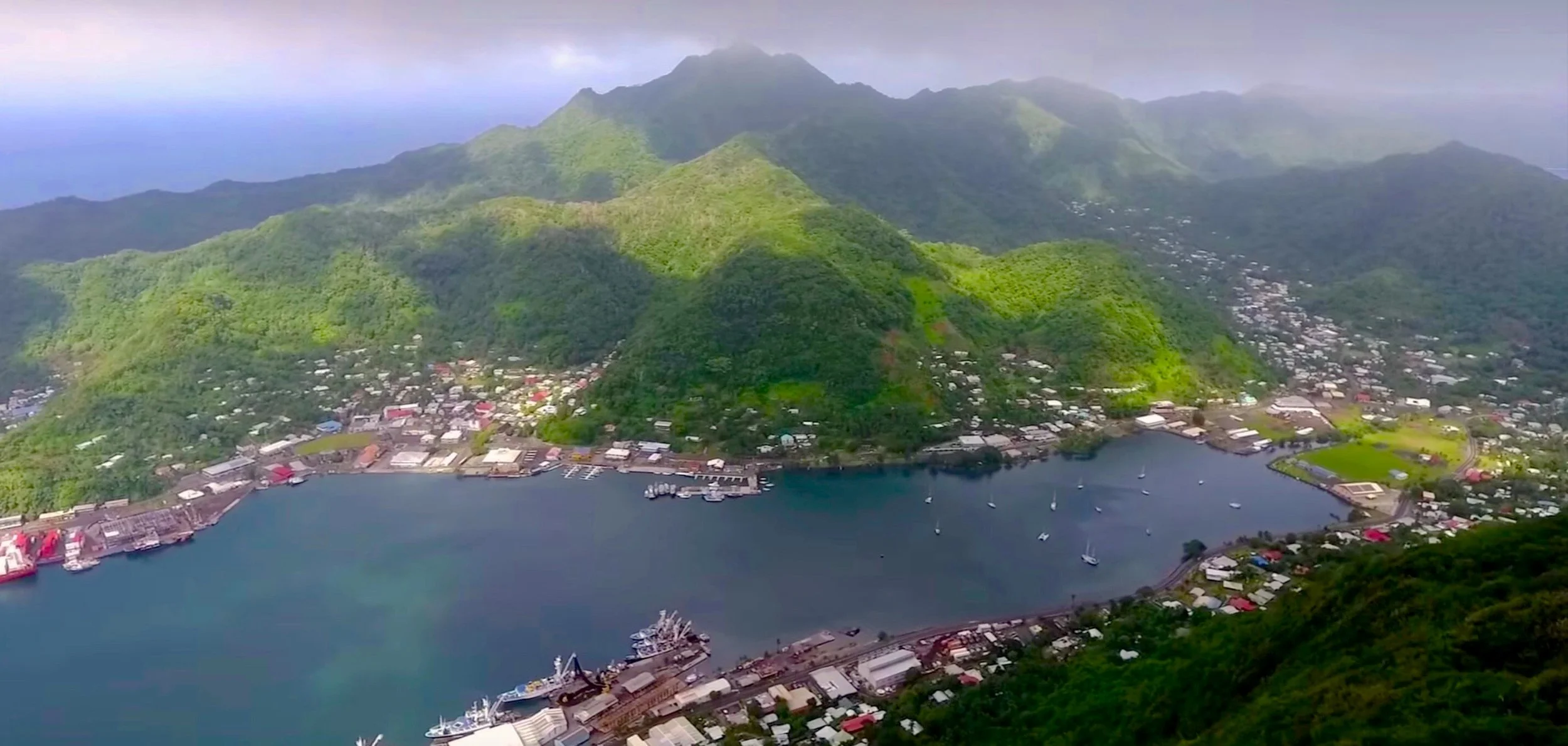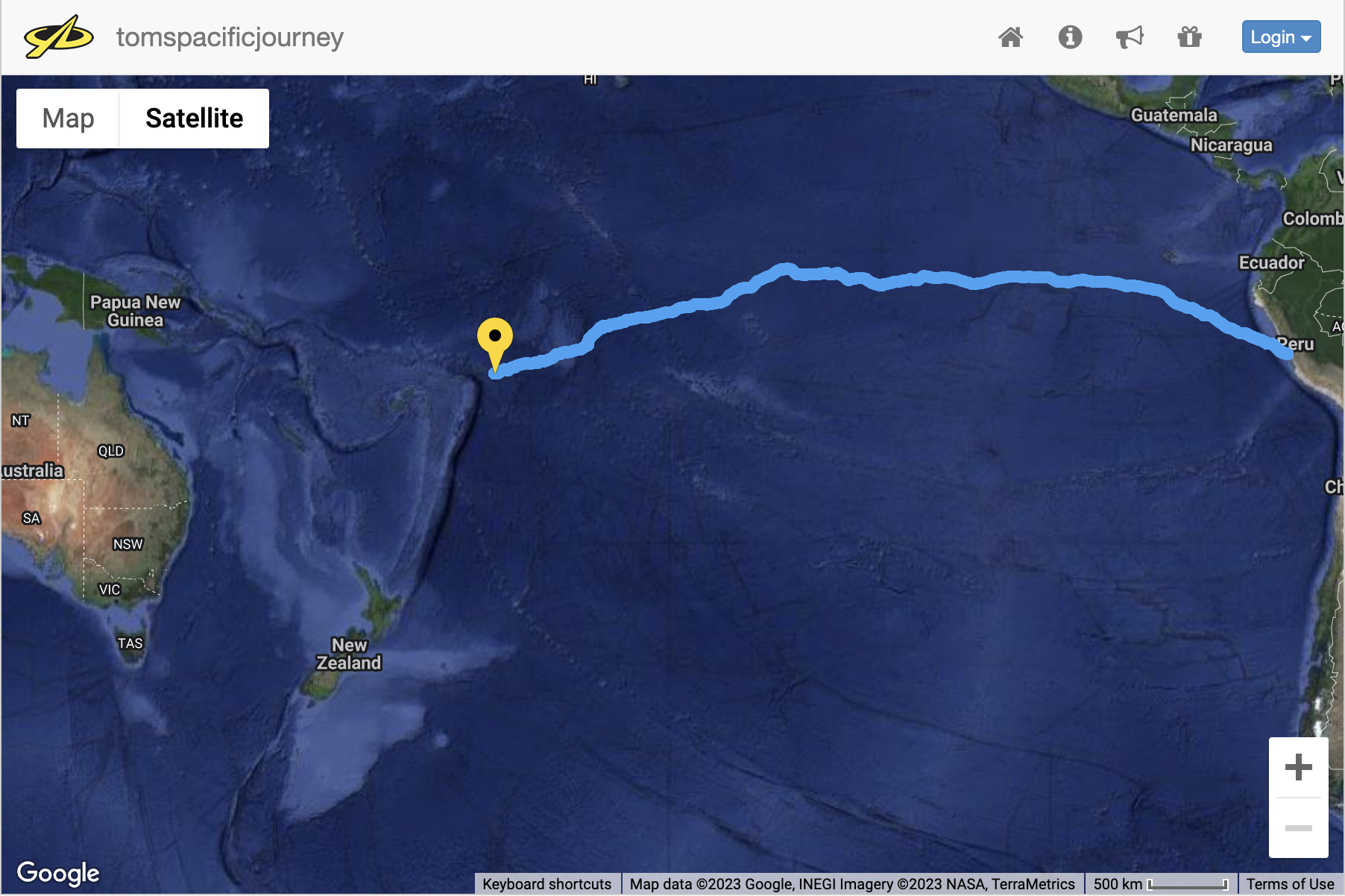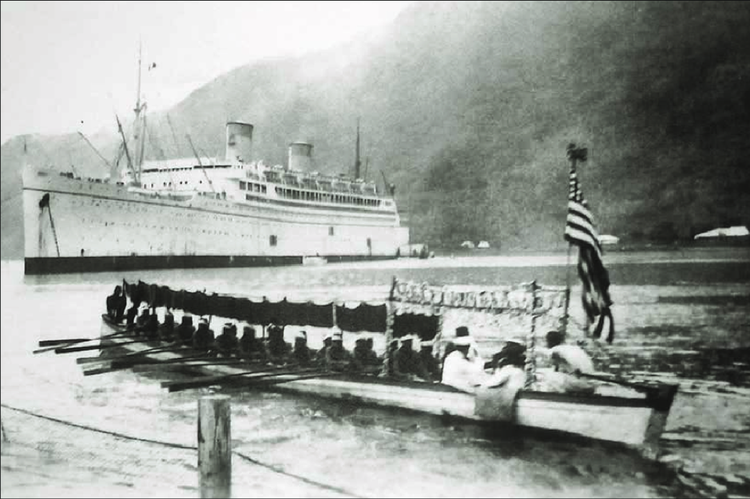Maiwar arrives in Pago Pago
From Tom Robinson’s shore team
(for background on this story visit the SWS archive page)
Dear Sponsors, Supporters, Family and Friends,
After 38 days at sea, Tom arrived in the American Samoan Port of Pago Pago on Sunday 21 May at 12.20pm local time (9.20am Monday Brisbane time). Tom had travelled 810 nautical miles (1,500 km) from Penrhyn Island at an average speed of .89 knots. (click to visit tracker)
In our most recent update we said that Mahuta was aiming for Tau - the most easterly populated island in the American Samoa group. As he passed by, he had a good look at Tau which, at 931 metres high, was easy to see from a distance. However, given that a more populated port would make the tasks of provisioning and maintenance so much easier, Tom decided to forgo a visit to Tau and head for American Samoa’s capital Pago Pago on Tutuila Island. The indomitable Bob McDavitt, otherwise known as metBob, was most helpful in providing guidance during the latter stages of Maiwar’s approaches to Tau and Pago Pago.
Close to exhaustion after 3 days on the oars and with almost no sleep, Tom decided to shelter in Fagaitua Bay just a few miles east of the entrance to Pago Pago Harbour for a well earned rest. He then rowed the last 5 or so nautical miles (9km) to the port facilities at the head of Pago Pago Harbour.
As he passed through the 1.5 kilometre wide entrance to the harbour, Mahuta would have been able to see its northern most extremity almost 3 kilometres distant. The harbour is ringed by lush mountains that are the remains of the caldera of an ancient volcano. He may also have experienced the delights of the olfactory emissions from the tuna fishing boats and the tuna canning factory on the harbour shore. These days Pago Pago sometimes gets a bad rap on account of its cannery and the aftermath of the pollution caused by the 2009 tsunami which resulted in large amounts of debris and oil being deposited in the harbour. We’re sure Tom will be unfazed by these factors and be pleased to meet the locals. Described as one of the South Pacific’s finest deep water harbours, Pago Pago’s infrastructure includes a container wharf and facilities for visiting cruise ships. With Pago Pago having a greater-area population of over 15,000 people Tom should be able to find all that he requires for the next stage of his row.
The Samoa Islands. Note that statute, not nautical, miles are shown. Source: From U.S. National Park Service circa 2002.
Interestingly, the Samoan islands are divided into Samoa and American Samoa. They’re also divided by the International Date Line. Fun fact: Samoa, Tonga and The Line Islands (Kiribati) are the first places in the world to welcome-in each new year.
The distance given in the map above “To Australia” provides a rough indication of how far Mahuta has yet to travel. According to our calculations, Tom has roughly 2,150 nautical miles (3,980 kilometres) to go before reaching South East Queensland. As South East Queensland is the closest part of the Australian coast to American Samoa, the distance he needs to travel increases the further north or south is his landing point.
Some of you will know that Tom’s Penrhyn name, Mahutahoehoeasanga, translates as the warrior who paddles from afar. Imagine how far he could go, and how fast, if he were the captain (coxswain) of a 24-person fautasi like the one in the 1936 photo below.
Pago Pago Harbour: Governor O.C. Dowling (Captain, U.S. Navy) departs American Samoa, 15 January 1936, in a ceremonially decorated fautasi manned by 24 Samoan rowers. Source: U.S. National Archives.
What could Mahuta achieve if he were in a modern fautasi which has 50 rowers? Today these modern boats, measuring more than 100 feet long, race on the harbour, with the highlight being the American Samoa Flag Day race held in April each year. In reality, Tom would have more success in Maiwar than in these modern boats which are open and not capable in offshore conditions.
To paraphrase Crocodile Dundee, Maiwar is not a rowing boat, this is a rowing boat!
A modern fautasi inside the entrance to Pago Pago Harbour. Source: Talanei.com
If you’d like to take a closer look at fautasi in action, the shore team thinks this video is one of the best: https://sanctuaries.noaa.gov/magazine/3/fautasi-the-race-for-flag-day/
A final note on pronunciation: We believe that just as a Samoan person would say that Samoa is pronounced Sah-moa, so they would say that Pago Pago is pronounced Pahn-go Pahn-go.
Thank you all very much for following Tom’s progress, for your sponsorship, financial assistance, and for your ongoing messages of support.
Yours sincerely,
The Shore Team
If you are enjoying Tom’s incredible adventure we strongly suggest you visit his GoFundMe page





